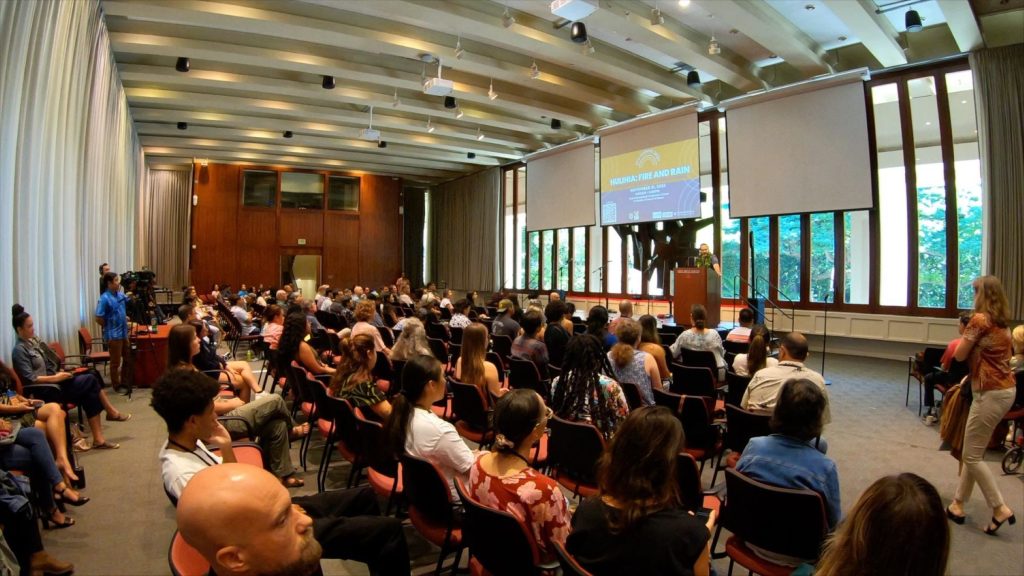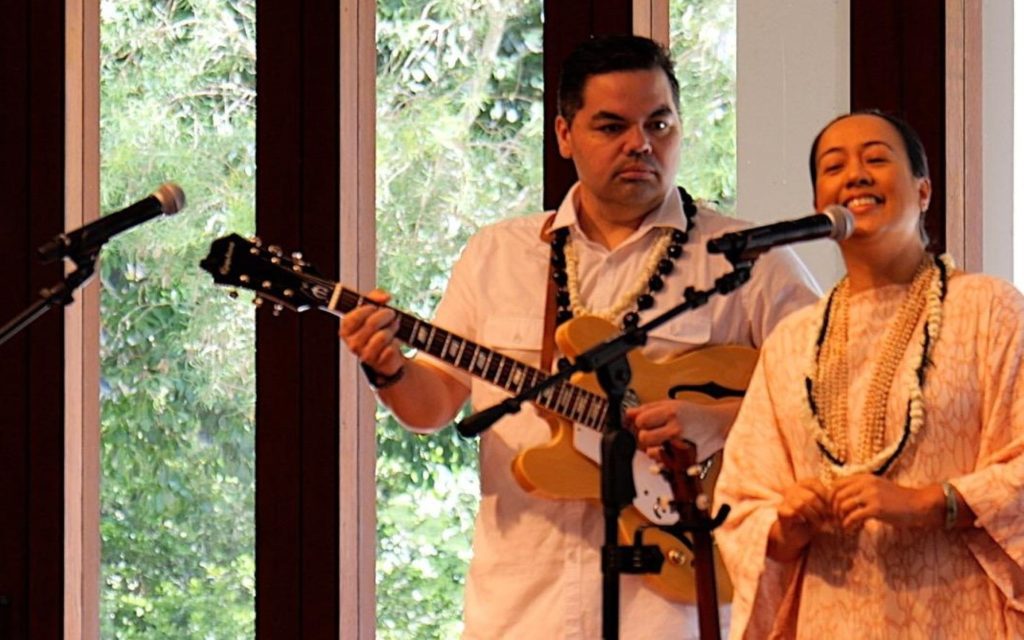Turning to ʻike Hawaiʻi — ancestral knowledge — to inspire solutions for today’s complex problems
Wildfires and floods have tested Hawaiʻi in recent years, but communities are turning to ʻike Hawaiʻi — ancestral knowledge — to inspire solutions.
Hundreds recently gathered at the University of Hawaiʻi at Mānoa for the 2024 Piʻo Summit “Hulihia: Fire and Rain,” a free series of forums focused on how leveraging ancestral Hawaiian knowledge is supporting long-term recovery in Lahaina on Maui and on Kauaʻi’s North Shore.

Discussions also highlighted Native Hawaiian values and practices that can guide healing and renewal for ʻāina (land) and communities.
“Piʻo summits were created to highlight ancestral innovation and the need for courageous leadership to solve the complex problems of our time,” said Kamanamaikalani Beamer.
Beamer is the Dana Naone Hall endowed chairperson in Hawaiian Studies, Literature and the Environment at UH-Mānoa Hawaiʻinuākea. She also is a professor at Kamakakūokalani Center for Hawaiian Studies and the UH-Mānoa William S. Richardson School of Law.
“Aloha ʻāina [love of the land] is advancing efforts all across Hawaiʻi,” added Beamer, “and this is about us galvanizing that movement here at the university.”
Award-winning vocalist and UH-Mānoa music alumna Raiatea Helm opened the summit with mele aloha ʻāina, grounding the event in songs of love for the land.
Her performance connected the audience to cherished places such as Oʻahu, Piʻihonua in the uplands of Hilo on the Big Island and the place of her roots Kalamaʻula on Molokaʻi.
One summit panel highlighted resilience in the Kauaʻi North Shore community of Hāʻena after catastrophic flooding during a 48-hour period in April 2018 that was caused by an upper level low pressure system supercharged by enhanced moisture blown in with low level trade winds.
Once the faucet was turned on, it was on full blast from April 13-15 over parts of the Garden Isle and Oʻahu, quickly producing seemingly biblical levels of flooding in areas including Hanalei, Hāʻena, Kīlauea, Waikoko, Wainiha and Waipa.

The National Weather Service forecast office in Honolulu called rainfall totals on Kauaʻi tremendous.
The highest rainfall total from the 2-day torrent was 53.57 inches recorded by an automated rain gauge in Waipa, an impressive 49.69 inches of which was collected in 24 hours from midday April 14 to midday April 15.
Damages were estimated near $20 million for just public properties. More than 500 Kauaʻi and Oʻahu homes were destroyed, damaged or otherwise affected by flooding.
Numerous landslides also cut off access to Wainiha and Hāʻena for more than 2 weeks.
“It was fortunate and amazing that there were no deaths or reports of serious injuries,” said the National Weather Service.
Leaders Chipper Wichman, Lei Wann and Billy Kinney shared during the Piʻo Summit panel focused on the 2018 flooding and Hāʻena’s resilience shared how ʻohana bonds and cultural heritage sustained recovery efforts and preserved community identity, promoting healing in the North Shore community following the natural disaster.
Another panel brought together experts to discuss the devastating and deadly August 2023 wildfires in Lahaina, Maui, focusing on recovery and paths forward.
Community leader Kekai Keahi, UH-Mānoa law professor Kapua Sproat and UH-Mānoa ecosystem fire specialist Clay Trauernicht explored how climate change heightens wildfire risks and how ancestral knowledge can inform Lahaina’s rebuilding.
“He aliʻi ka ʻāina, he kauwā ke kanaka — the land is the chief, we are the stewards,” Beamer emphasized. “A great example is restoration of streams. When we restore streams we restore the life and ecosystems of that stream system. But it also re-greens the ʻāina, so places in, like, Lahaina, when the streams were flowing, when Lahaina was the so-called ‘Venice of the Pacific,’ wildfires wouldn’t steep through.”
The summit was hosted by Pōʻai Ke Aloha ʻĀina, a project of the Dana Naone Hall chairperson. It spotlighted how University of Hawaiʻi fosters aloha ʻāina practices to address modern challenges.
“When we think about wai in the aquifer, the water that we drink none of us created, it’s literally there because of our ancestral stewardship systems, because of the blessings of Kāne [Hawaiian god of creation],” Beamer said, adding it’s those kinds of insights necessary to form a better state and brighter future.








